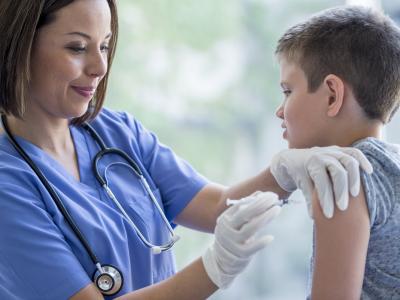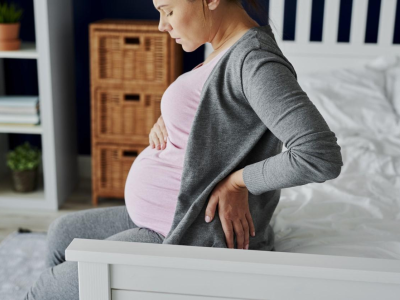Financial incentives may cut antibiotic prescribing, with few unintended results
The antibiotic prescribing component of a financial incentive program to improve services at UK National Health Service (NHS) clinics found a significant reduction in both total and broad-spectrum antibiotic prescribing in primary care settings, with no link to unintended consequences, except for a few specific conditions.
A research team from Imperial College London reported its findings on Oct 18 in two separate reports in Clinical Infectious Diseases: one on the impact of the antimicrobial stewardship component of the Quality Premium (QP) program and the other on possible unintended consequences.
UK officials introduced the QP program in 2015, which included financial incentives for meeting different criteria, including reducing antibiotic prescribing by 1% and reducing broad-spectrum antibiotic prescriptions by 10%.
To gauge the impact of the program, the researchers analyzed national antibiotic prescribing data from April 2013 till February 2017 using a segmented regression analysis of interrupted time series data. They looked at the total number of items prescribed, the number prescribed per STAR-PU (specific therapeutic group age-sex related prescribing units), and number and percentage of broad-spectrum antibiotics prescribed.
More than 140 million antibiotic items were prescribed during the study period. After the quality premium was introduced, antibiotic prescribing decreased by 8.2%, reflecting more than 5.9 million fewer antibiotics prescribed in the 23 months after the QP went into effect compared with expected numbers based on trends found in the months before the intervention. The investigators also saw a relative decrease in antibiotics prescribed per STAR-PU, as well as a similar effect for broad-spectrum antibiotics, which were reduced by 18.9%.
Oct 18 Clin Infect Dis abstract
In the second study, which focused on potential unintended consequences of the reduced prescribing part of the quality premium incentive, the team looked at databases of general practitioner consultations and emergency department (ED) admissions for a set of pre-defined conditions. Their analysis covered 27,334 clinic visits and more than 5 million ED admissions.
Overall, the researchers didn't see any changes in rates for either measure. When they considered each condition separately, however, they found a significant increase in hospital admission for quinsy (peritonsillar abscess) and significant decreases for hospital-acquired pneumonia, scarlet fever, pyelonephritis, and complicated urinary tract infections. For clinic visits, the team focuses on empyema and scarlet fever and didn't observe any significant changes for either.
Oct 18 Clin Infect Dis abstract
Active surveillance for ESBL-E in neonatal intensive care found costly
A single-center study today in Infection Control and Hospital Epidemiology found that active surveillance to prevent extended-spectrum beta-lactamase-producing Enterobacteriaceae (ESBL-E) transmission may have contributed to a decline in incidence in a neonatal intensive care unit (NICU), but was too costly to continue.
The retrospective observational study was conducted at Children's National Health System in Washington, DC, where active surveillance for ESBL-E colonization has been performed in the NICU since the early 1990s, when a point prevalence study revealed a colonization rate of 30%. Researchers from the hospital and George Washington University School of Medicine and Health Sciences reviewed 19 years of data to evaluate the efficacy and financial impact of active surveillance on ESBL colonization and infection in the NICU and to assess the need for continuing the practice.
The study included patients admitted to the NICU from January 1999 through March 2018. Active surveillance using rectal swabs was conducted on all patients admitted to the unit until March 2017. Overall, 171 patients were found to have ESBL-E colonization or infection, and 150 of those patients (87.7%) were detected by active surveillance. The overall incidence rate of ESBL-E colonization or infection was estimated to be 1.4 per 100 patient admissions. The hospital-acquired incidence rate was 0.41 per 1,000 patient-days; this rate had declined since 2002, with an average of six cases detected annually, and declined significantly after the unit moved into a single-bed unit featuring private rooms in 2009. Of the 150 colonized patients, 14 (9.3%) subsequently developed an infection.
The researchers estimated that active surveillance resulted in a total of 50,950 specimens being collected and that the total direct cost of processing those specimens was $127,187—an average of $848 to detect one patient colonized with ESBL-E.
"Active surveillance for ESBL-E in this setting might have contributed to the prevention of ESBL-E transmission when used in conjunction with contact precautions and private rooms, but it became increasingly costly when incidence continued to decrease," the authors of the study write. "Thus, we have decided to discontinue the active surveillance, and we continue to emphasize the use of fundamental infection control strategies, including proper hand hygiene, contact precautions, and appropriate antibiotic use, to combat antimicrobial resistance, including that of ESBL-E pathogens, in our NICU."
Oct 22 Infect Control Hosp Epidemiol abstract













